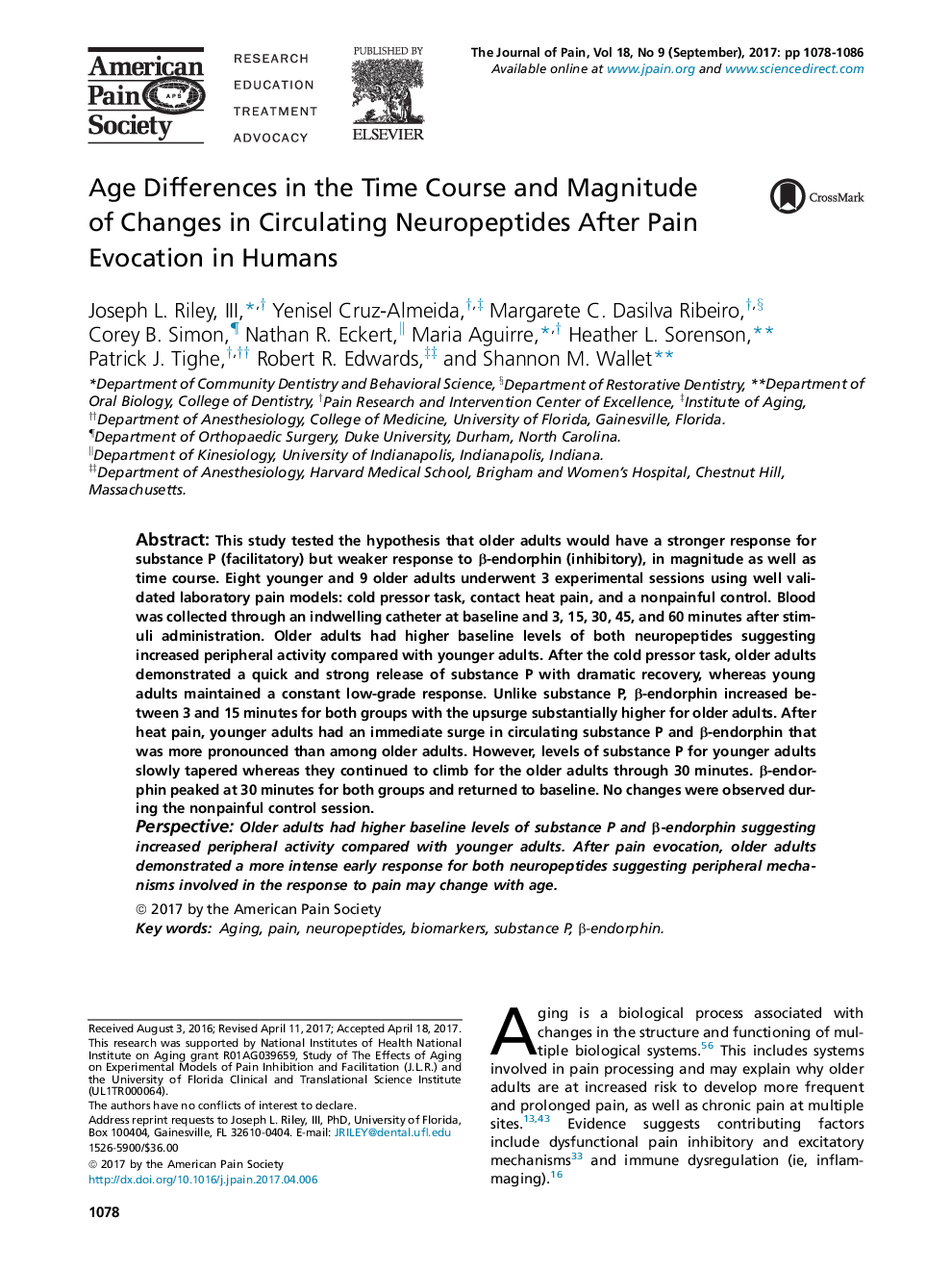| کد مقاله | کد نشریه | سال انتشار | مقاله انگلیسی | نسخه تمام متن |
|---|---|---|---|---|
| 5578127 | 1566702 | 2017 | 9 صفحه PDF | دانلود رایگان |
- Older adults had higher baseline levels of substance P and β-endorphin compared with younger adults.
- Older adults had a more intense initial response for substance P and β-endorphin.
- A weaker response for β-endorphin among the older participants was not observed.
- Resolution occurred at similar time points for both younger and older adults.
- The response patterns differed between cold pressure pain and contact heat.
This study tested the hypothesis that older adults would have a stronger response for substance P (facilitatory) but weaker response to β-endorphin (inhibitory), in magnitude as well as time course. Eight younger and 9 older adults underwent 3 experimental sessions using well validated laboratory pain models: cold pressor task, contact heat pain, and a nonpainful control. Blood was collected through an indwelling catheter at baseline and 3, 15, 30, 45, and 60 minutes after stimuli administration. Older adults had higher baseline levels of both neuropeptides suggesting increased peripheral activity compared with younger adults. After the cold pressor task, older adults demonstrated a quick and strong release of substance P with dramatic recovery, whereas young adults maintained a constant low-grade response. Unlike substance P, β-endorphin increased between 3 and 15 minutes for both groups with the upsurge substantially higher for older adults. After heat pain, younger adults had an immediate surge in circulating substance P and β-endorphin that was more pronounced than among older adults. However, levels of substance P for younger adults slowly tapered whereas they continued to climb for the older adults through 30 minutes. β-endorphin peaked at 30 minutes for both groups and returned to baseline. No changes were observed during the nonpainful control session.PerspectiveOlder adults had higher baseline levels of substance P and β-endorphin suggesting increased peripheral activity compared with younger adults. After pain evocation, older adults demonstrated a more intense early response for both neuropeptides suggesting peripheral mechanisms involved in the response to pain may change with age.
Journal: The Journal of Pain - Volume 18, Issue 9, September 2017, Pages 1078-1086
